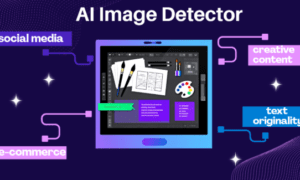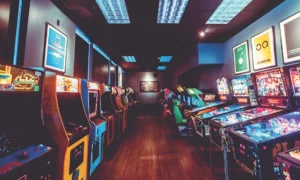The digital age has transformed how people connect, opening new avenues for creativity and expression through online art marketplaces. These marketplaces provide a dynamic experience, making it easier for anybody to buy or sell artwork.
Buyers can now find the ideal piece of art with the press of a button, and these technological advancements have also changed how artists make their work available.
By delving deeper into the realm of transformations in online art sales, you can gain valuable insights into the evolution of the art industry, the impact of technology, and the changing preferences of buyers and sellers.
Online art marketplaces
Technology has revolutionized the online art economy in recent years, allowing buyers and sellers to connect more simply than ever. You can find original artwork from around the world, limited-edition prints, and other collector artworks easily, and of course, artists can expose their work to a bigger audience.
Due to increased global demand, sellers’ sales have increased, and thanks to online marketplaces, buyers can find rare artifacts they would not otherwise have access to.
As a result, new technologies continue to turn online art marketplaces into dynamic hubs for discovering, communicating with, and purchasing limited edition works, from classic paintings to modern sculptures and digital creations.
Reach a larger audience
Artists can now reach audiences in new and imaginative ways thanks to the rise of online art marketplaces. Online platforms allow artists to communicate with far-flung clientele and give collectors a low-cost, simple means to peruse artworks and purchase pieces from their favorite artists.
For example, Australian indigenous art can be viewed and purchased by people around the world today, making it a hot commodity — while decades ago, having this art in an overseas home or business was highly rare.
Online galleries enable deeper contact between fans and artists than was previously possible. And artists can communicate with their audiences more directly and raise awareness about their work more significantly than ever before, thanks to social media networks. This is an excellent opportunity for artists to boost their visibility and increase sales and recognition.
AI algorithms
Artificial algorithms have transformed how buyers identify aesthetically engaging and emotionally resonant artwork. For novice collectors, AI algorithms personalize their experience by recommending art based on their tastes and aesthetic sensibility.
These algorithms, when combined with this technology, can measure human taste more accurately than any experienced art advisor could. This gives buyers an excellent opportunity to access artwork anywhere that matches their taste readily.
This revolutionary technology also allows us to find and support lesser-known artists who might otherwise need to be noticed in visual arts marketplaces due to distance or cost issues.
Virtual and augmented reality
The use of virtual and augmented reality has transformed the way art is shown and sold online. Artists, galleries, and collectors can now immerse themselves in a visual experience unrivaled by any printed catalog or internet display.
With VR and AR technologies limited only by imaginations, people can interact with artworks in real-time, change their perspective on a piece of artwork from every angle, explore stunning virtual environments explicitly created for viewing artistic works, as well as gain insights into the value of each artwork with accompanying data such as its sale history.
All of this makes online art buying more fascinating than ever before. It also makes it easier for customers to find new artists and connect with them.
Blockchain technology
Blockchain technology can transform how art is bought and sold online. Buyers and sellers might have greater confidence in the legitimacy of a transaction with blockchain because it is recorded on an immutable ledger.
This means any data linked with a piece of artwork can be safely saved and tracked throughout time, such as who created it, its sales history, and even provenance information. Blockchain provides safety, security, and transparency through an online art marketplace for all financial transactions.
Digital payments
Digital payments have numerous advantages when purchasing or selling artwork online, providing greater security than cash or cheques and guaranteeing the buyer’s money is secure, and the seller can guarantee payment.
Digital payments also offer versatility by allowing multiple methods of processing funds, making the transaction easier and faster. In addition, payments can be made safely anytime, anywhere with digital payment technologies, eliminating the need to travel in person to pick up artwork.
Breaking barriers and fueling creativity
Online art marketplaces have come a long way, and technology has allowed us to break through existing barriers, creating new possibilities. Artists can access a larger global audience, find new ways to express their creativity, and generate money doing what they love most.
The ongoing advancement of technology is likely to bring about exciting and inventive innovations in the online art industry, with increased access to art resources and improved prospects for creators and curators. This ever-changing industry presents an intriguing landscape to observe and explore.

































